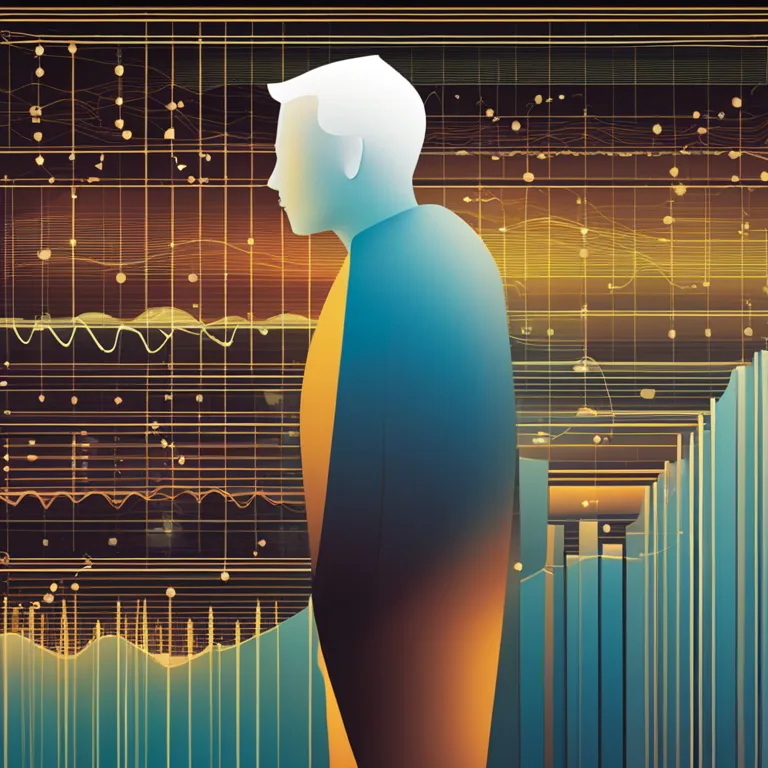
The Practical Uses of Biorhythms in Our Lives
Discover how biorhythms can be applied to improve well-being and achieve a better understanding of personal cycles in health, decision-making, and relationships.
article by Adrian Wallace
Biorhythms: An Introduction
In the realm of personal well-being, biorhythms present as an intriguing concept that suggests our lives are influenced by innate cycles. These cycles are believed to affect our physical, emotional, and intellectual faculties. Originating from the Greek words "bio" (life) and "rhythm" (regular movement), biorhythms chart the rises and falls in our individual energy levels. The theory posits that by understanding and anticipating these personal rhythms, one can optimize moments of interaction, activity, and rest.

Physical Biorhythm: The Body's Cycle
The physical biorhythm operates on a 23-day cycle and is thought to influence our stamina, strength, and overall vitality. It's used by athletes and fitness enthusiasts to time their training and competitions for periods when their physical readiness is at its peak. Moreover, this cycle can aid in planning surgeries or recovery periods, as times of higher physical biorhythm are said to correspond with quicker healing and regeneration.

Emotional Biorhythm: Navigating Feelings
A 28-day cycle guides the emotional biorhythm, impacting our mood and emotional stability. Knowledge of one's emotional cycle can serve as a tool for planning significant life events or understanding patterns in one's social interactions. For example, individuals might choose to address complex emotional matters or engage in deep relational work when their emotional biorhythm suggests a higher resilience to stress.

Intellectual Biorhythm: Harnessing Mental Acuity
With a cycle length of 33 days, the intellectual biorhythm is seen as a determinant of cognitive functions such as analysis, reasoning, and memory. This aspect becomes particularly useful for students and professionals aiming to maximize their learning or problem-solving capacities, scheduling exams or pivotal meetings during the high phases of their intellectual cycle.

Biorhythms and Decision Making
Decision-making is an area where biorhythms are said to play a crucial role. By comparing the intersections of physical, emotional, and intellectual cycles, individuals can determine auspicious days for making significant decisions or initiating new ventures. Businesses have also taken an interest, with managers and HR specialists using biorhythm charts to analyze the potential collective performance of teams.
The Intersection of Biorhythms and Compatibility
Couple compatibility can be examined through the lens of biorhythms as well. Partners may look at their respective cycles to better understand the natural ebb and flow of their relational dynamics. Schedule conflicts might be reconsidered when both parties grasp their innate rhythms, fostering empathy and communication in long-term relationships.
Biorhythms as a Wellness Tool
As a holistic wellness tool, biorhythms offer an intriguing prospect for shaping lifestyle choices. From sleep patterns to diet and social planning, knowing one's biorhythmic chart could align daily habits with the body's natural propensity for rest or activity. Although it is not a scientifically proven method, many individuals find comfort and insight in aligning with their purported natural cycles.
Published: 12/28/2023
Modified: 12/28/2023
More predictions
Come back here soon to learn more about yourself and your future


Biorhythm Basics: Patterns of Life's Vital Rhythms
Explore the intriguing concept of biorhythms and how they exemplify distinct cycles impacting physical, emotional, and intellectual states.


Biorhythm Birthday Compatibility: Syncing Life Cycles
Discover the intriguing concept of biorhythm birthday compatibility and how syncing life cycles can influence personal relationships.


Halting Biorhythmic Cycles: Can It Be Done?
Discover whether it's possible to stop your biorhythms and the implications it might have on your well-being and life harmony.